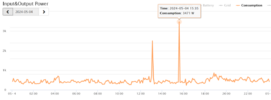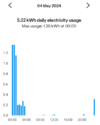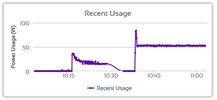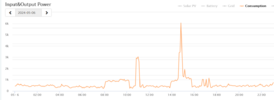As
@JohnW2 has implied many do not consider the 4 high load fixed appliances really need to be treated any different to the high load portable appliance. So washing machine, dish washer, dryer and oven treated the same as a kettle.
I would single out the dryer, be it built into a washing machine or as a separate item, an immersion heater with 40 gallons can take 4 hours to raise the temp from 10ºC to 80ºC with a 3kW immersion heater, however mine does not go that deep in the tank, so does not heat 40 gallons, lucky if it heats 10 and it does not heat to 80ºC more like 60ºC so in real terms less than an hour, so in real terms my old vented tumble dryer was a heavier load to the immersion heater it runs for longer than the immersion, and my immersion has a variable load since using an iboost+ so it only uses solar power, so comparing the immersion with a resistive clothes dryer they are about on par with each other.
The others including the oven are thermostatic controlled so the load is unlikely to be any more than the kettle as far as heating effect on cables goes. The being central on a ring final is desirable to stop overload near the origin as the load sharing not as good at the origin of a ring final.
The ring final reading the old literature was designed to allow the home to be electrically heated, I think this was a pipe dream, as an electric fire can be switched on for an extended time, and my parents home built 1954 so one of the first to have a ring final from new, had a single ring final and even with 7/0.029 cable which was slightly thicker than 2.5 mm² and solid brass pins in the 13 amp plug which will conduct heat away faster, and only 30 amp not 32 amp without the coal, coke, then gas fires it would have struggled to keep house warm with just electric without some over heating of cables or fuse rupturing.
I've checked the smart meter and I don't think I've ever seen the washing machine or dish washer draw anything close to 2kW each - more likely about half that.
I have since solar has been fitted also looked at power use,

peak of 3471 watts is not shown on the smart meter app

and the peak shown on smart meter not shown on solar app under consumption as it does not regard recharging batteries as consumption. The two charts selected to show same day, one would not think related to each other.
I note with the solar there can be a delay of 5 to 10 minutes, and also seems to be some odd readings with the IHD (in home display) my power meter works better for a single items to see what it uses,

this shows a battery charger, but problem is time, recent usage is only shown for around an hour, and once one goes to average hourly use it rounds things off, however the point is more does it matter? It takes time to heat up a cable, fuse, or trip, so short peaks hardly matter, what we are trying to avoid is prolonged high power overloads, so really only the immersion heater, room heaters, and tumble dryer of items using 3 kW or less are a problem, the rest either has dedicated supply as over 3 kW or runs for a short time.





